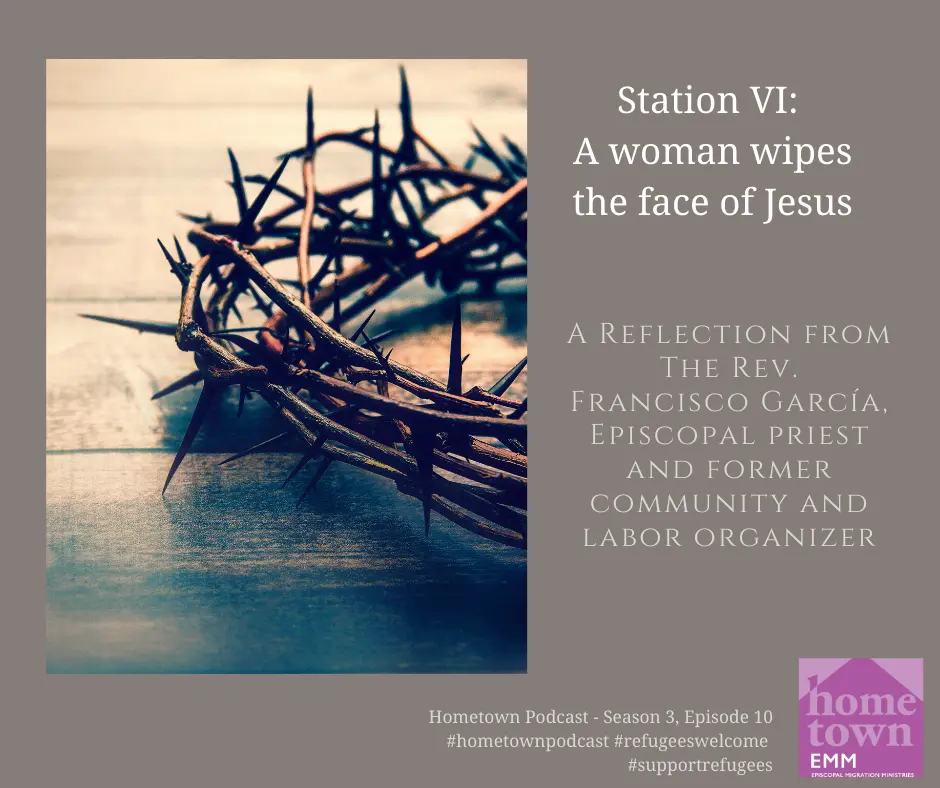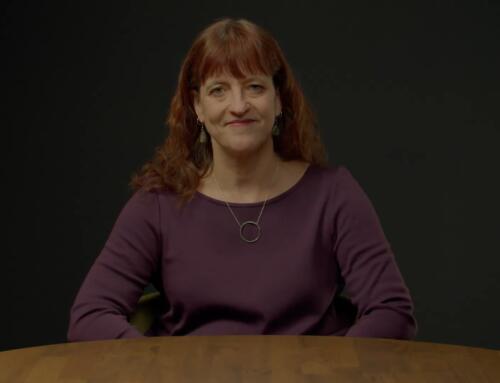https://soundcloud.com/emmrefugees/stations-of-the-cross-station-vi
Reflection on the Sixth Station
By The Rev. Francisco García
Who was this woman who, according to popular tradition, engaged in this seemingly simple yet radically compassionate and risky gesture towards Jesus at his moment of great suffering? At this point on Jesus’ journey towards crucifixion, a crown of thorns had been forcefully placed upon his head, and he also had been brutally struck with reeds. The Sixth station says that “his appearance was so marred, beyond human semblance.” It is at this moment, on the way to Golgotha, that this woman approached Jesus and wiped the blood and sweat off of his marred face. She later became known as Veronica, derived from Vera Icona (true image), because in the Stations of the Cross tradition it is said that when she wiped Jesus’ face, the true image of Jesus remained on the veil. Most likely, Veronica represents the many nameless women who followed Jesus to Jerusalem and “provided for him” according to the Synoptic gospels (Mt 27:55; Mk 15:41).
I’m reminded of the countless nameless women—mothers, teen girls, and younger—who have made the treacherous journey of migration, fleeing economic despair, persecution, and violence, in order to have just a small taste of freedom, dignity, and well-being. Like Veronica, their actions were desperate, risk-filled, and motivated by love. Yet who wipes the faces of these women and girls at a time of their greatest suffering and need? Who stands in risk-filled love, compassion, and solidarity with families who are being crucified by border walls, xenophobia, and lack of due process? Veronica, in her bold act of love, was giving back to Jesus what he had modeled for his followers—love one another as I have loved you. As people of the Jesus Movement, we are called to do no less today.
Francisco García is a Ph.D. student at Vanderbilt University, focusing on Theological Studies and Ethics. A priest and former community and labor organizer, he also serves as an Assistant Chaplain at St. Augustine’s Episcopal Chapel in Nashville. Prior to his doctoral studies, he served as an Episcopal school chaplain, and in leadership roles at two parishes, most recently as the Rector of Holy Faith Episcopal Church, a multiracial, multilingual congregation in Inglewood, California. Francisco convened and served as Co-Chair of the Sanctuary Task Force of the Diocese of Los Angeles, also known as L.A. Sacred Resistance, formed to implement a Resolution committing the Diocese to be a place of welcome, refuge, and sanctuary to members of the immigrant and refugee community and all who are targets of hate.






